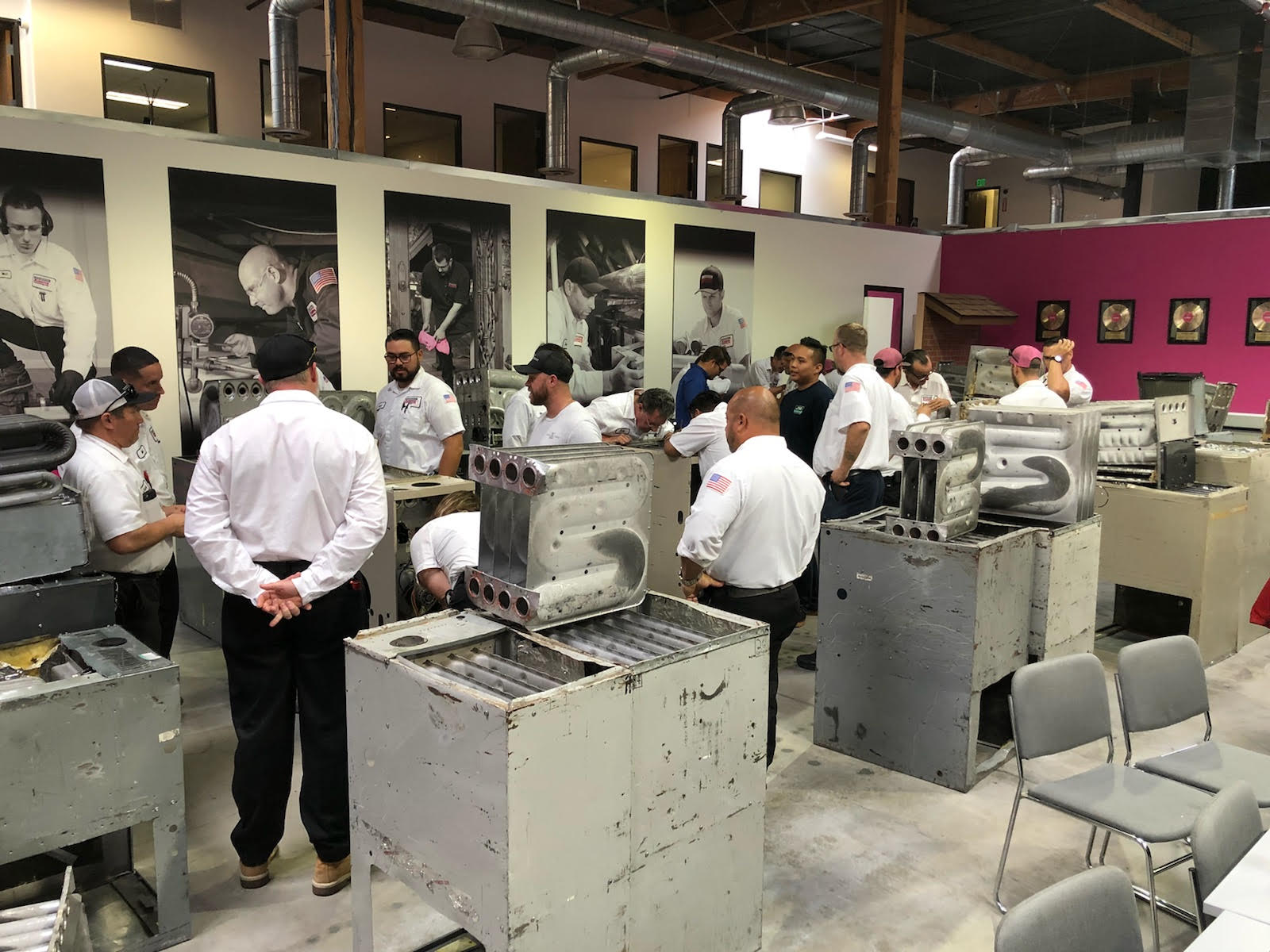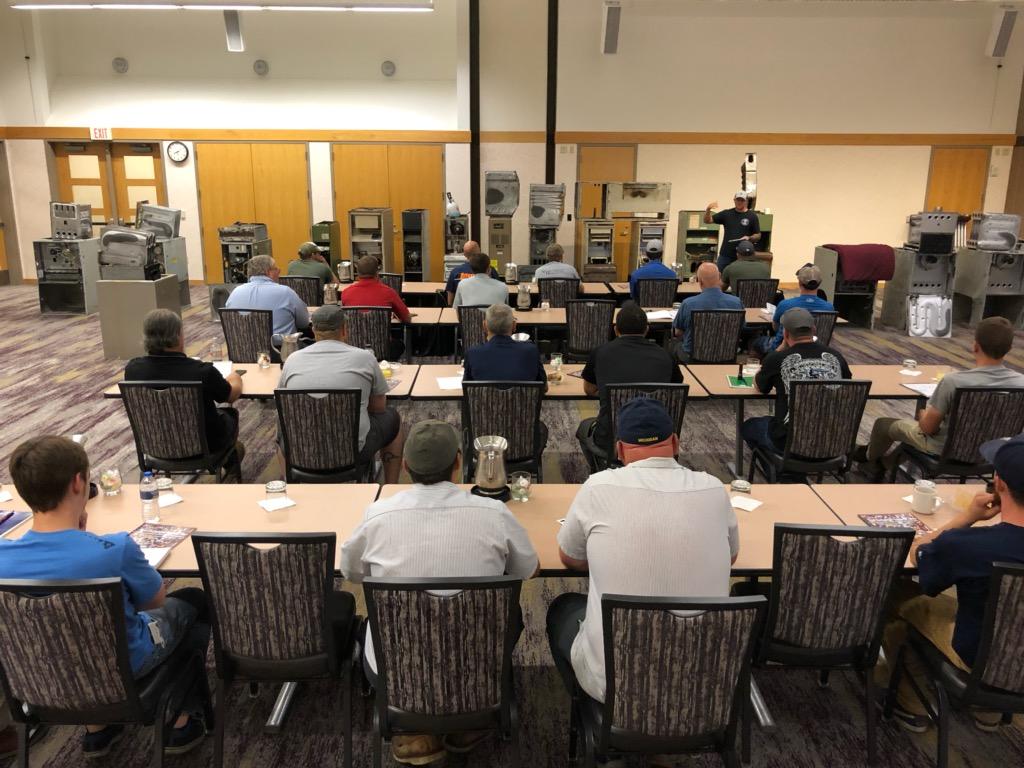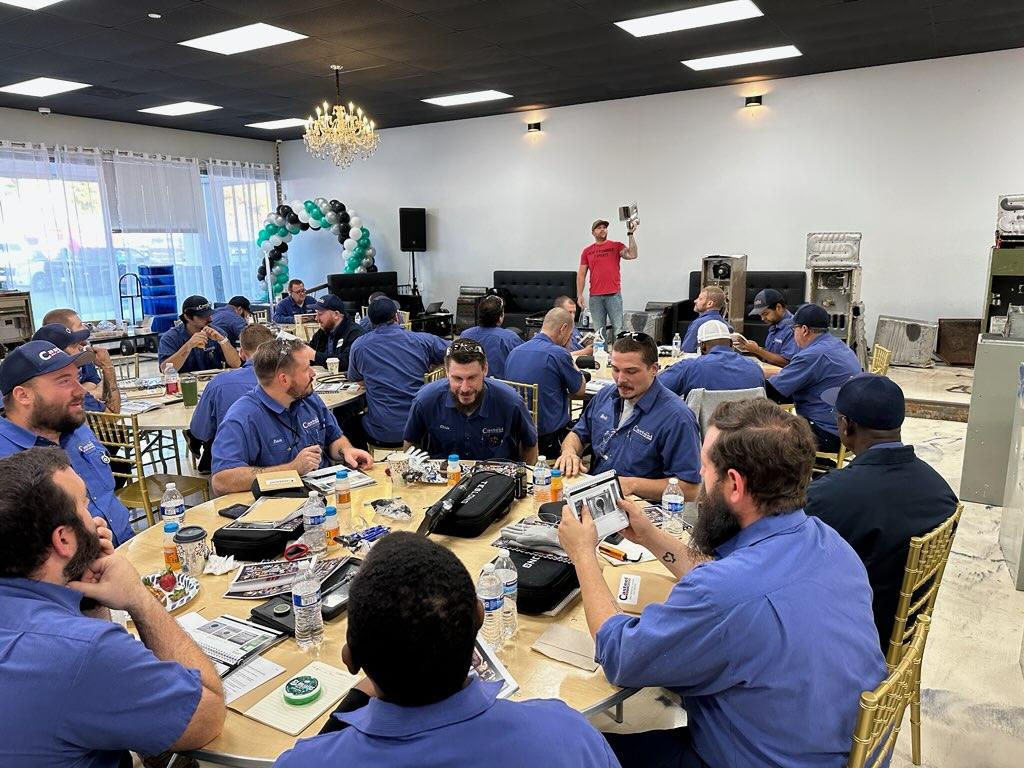Your furnace heat exchanger plays a critical role in keeping your home warm and safe. It transfers heat from the combustion process into the air that circulates throughout your house, all while keeping combustion gases like carbon monoxide (CO) safely sealed inside the system. But when a heat exchanger starts to fail, that barrier can be compromised—potentially exposing your family to toxic gases, reducing system efficiency, and driving up your energy bills. Whether you’re a homeowner concerned about safety or an HVAC professional trying to educate your clients, knowing the signs of a failing heat exchanger is essential. Let’s break down the most common warning signs.
-
Carbon Monoxide Exposure
CO Detector Alarms
If your carbon monoxide detector goes off, take it seriously. One of the most dangerous consequences of a cracked heat exchanger is the release of CO, a colorless, odorless, and potentially deadly gas. Furnaces with compromised exchangers can allow flue gas to escape into the home.
Health Symptoms
If household members are experiencing symptoms like nausea, dizziness, headaches, or flu-like feelings without a known cause, it could be carbon monoxide poisoning. This is a medical emergency—shut down the furnace immediately and ventilate the area. -
Visual and Odor-Related Clues
Yellow or Flickering Flames
A properly functioning gas furnace should have a steady blue flame. If the flame appears yellow, orange, or flickering, it may indicate incomplete combustion, often caused by airflow disruption from a cracked exchanger or soot buildup.
Soot and Corrosion
Dark residue around the burner or inside the furnace cabinet signals incomplete burning. Additionally, visible rust, cracks, or corrosion on the heat exchanger or nearby metal components (like the chimney, flue, or combustion chamber) should not be ignored.
Strange Smells
An unpleasant odor—often described as a burning or formaldehyde-like smell—can occur when combustion gases escape due to a failing heat exchanger. This can signal the release of exhaust gas into the indoor air supply. -
Audible Red Flags
Popping, Banging, or Rattling Noises
Metal stress, thermal expansion, and damage inside the furnace can cause unusual sounds as the system heats and cools. These noises might be due to metal components shifting against each other when a fracture forms in the heat exchanger wall. -
Performance and Efficiency Issues
Higher Energy Bills
A compromised heat exchanger can affect heat transfer efficiency, forcing the furnace to work harder, consume more fuel, and increase operating costs. If your energy usage is rising but your comfort level isn’t improving, it’s worth investigating.
Uneven Heating
Airflow disruption from internal blockages or cracks may cause rooms to heat unevenly. If some areas of the home feel significantly colder than others, there could be an issue within the system.
Short Cycling
When the furnace frequently turns on and off, this is called short cycling—often caused by overheating or improper burner operation linked to a cracked heat exchanger.
Water Around the Furnace
Condensation near the base of a furnace may suggest a leak inside the heat exchanger or condenser coil, especially in high-efficiency models.
Why Early Detection Matters
Ignoring the signs of a failing heat exchanger can put your home and family at risk. Timely diagnosis and professional inspection can:
- Prevent carbon monoxide leaks
- Improve system longevity
- Restore thermal efficiency
- Reduce utility costs
- Help maintain your warranty coverage
Want to Become a Pro at Spotting Failing Heat Exchangers?
At Heat Exchanger Experts, our nationwide HVAC training seminars are designed to teach technicians how to accurately inspect and diagnose heat exchanger problems with confidence. In just one day, you’ll learn how to:
- Identify cracks, wear, and stress points on over 50 real heat exchanger models
- Spot repeat failure patterns in common furnace designs
- Reduce liability by improving inspection accuracy
- Use proven inspection techniques developed over 50 years of field experience
You’ll also receive a full-color manual packed with illustrations, guidance, and practical field examples—making it easier to educate customers and take the right action in critical situations. Browse Upcoming HVAC Seminars and gain the skills that set you apart in today’s competitive HVAC landscape.
FAQ: Furnace Heat Exchanger Failure
-
Can a cracked heat exchanger be repaired?
No. Cracks compromise the structural integrity of the unit and can’t be safely repaired. The heat exchanger or entire furnace must be replaced.
-
How do I confirm a suspected heat exchanger failure?
Use inspection tools like a borescope, combustion analyzer, or mirror and light. Certification through Heat Exchanger Experts ensures you can inspect and diagnose accurately.
-
What causes a heat exchanger to fail?
Common causes include thermal stress, airflow restrictions, poor maintenance, and corrosion due to moisture or acidic condensation.
-
How dangerous is a cracked heat exchanger?
Very. It can release carbon monoxide and other gases into the living space, posing a serious health risk and fire hazard.
-
Should the entire furnace be replaced if the heat exchanger fails?
If the unit is old or out of warranty, replacing the entire furnace is often more cost-effective. Otherwise, just the heat exchanger may be replaced—depending on manufacturer recommendations.
-
How often should heat exchangers be inspected?
At least once a year during regular HVAC maintenance, especially before the heating season begins.




